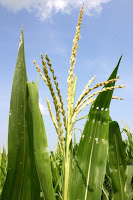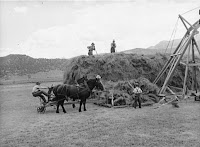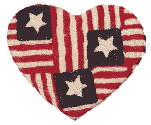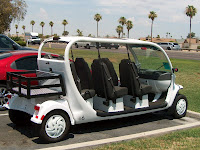Houses we didn't buy
When Dennis was transferred to Fort Campbell, we became first-time home-buyers. We were living out of suitcases in a hotel room with two little children, and Dennis was working midnights. And we had a limited number of days that we could stay in the hotel with our expenses paid. Naturally enough, we were desperate to find a place quickly.
Could have moved to Dover...
After our first session with a realtor, we thought about buying a little house near Dover, TN. It was an older home, but the owner had remodeled it nicely. It sat on five acres, and it had a small horse barn. A little creek ran through the back yard, barely fifty feet behind the house. We liked the house, but it just didn't have enough bedrooms for us.
Now that I'm enlightened about how streams can rise in this country, I am thankful that we didn't buy that house. I'll bet that little stream gets out of its banks frequently. Every time it rained heavily, I would have worried about the kids falling into that flooded creek!
Could have moved to Lafayette...
We looked at another group of houses with another realtor, and we liked a little house in southwest Christian County, near Lafayette, KY. In some ways, it was the house I'd always wanted. It was white with a big front porch. The rooms were fairly large, and there was an old-fashioned feel to the place. However, there was hardly a tree on the five acres, and the neighbor just over the fence had the most junk piled in his yard that I've ever seen around a dwelling.
Despite its shortcomings, we tried to bid on that little white house, but someone else got a bid in first and bought it. It's just as well. The junky neighbor next door would have been a perpetual irritation, and without trees, that little house must have been like an oven in the summer sun.
But here we are, instead
Instead, we bought the house where we live -- a brick ranch house built in the 1960s. We've had various homeowner problems, but one thing we've never worried about is flooding. Our little property is located on the edge of a broad ridge. A steep quarter-mile downhill slope starts at the edge of our front lawn. Excess surface water can't help draining away. It gets soggy up here sometimes, but we'll never be flooded.
Another thing we've never worried about is junky neighbors. Our two nearest neighbors are Mennonites. Their farmyards are quite tidy. We try to keep our grass mowed so they won't be embarassed when their Mennonite friends visit. Thank goodness we only mow about an acre. I wonder why we ever thought we wanted five acres?
When our children think back about their childhoods, I think they'll remember the trees here. Their playhouses were under the big old trees where the log house once stood. Their swing, hung from a high branch, carried them over the bank and high into the open air. They lay on the trampoline on summer evenings and watched the hummingbirds in the mimosa blossoms. They raked huge leaf piles in the fall and played in them. And how could they forget all the acorns and tree seedlings their dad has planted and how the new trees have grown over the years?
This is the story of how God led us to a house that was right for us. It's not a palace, but it was a good place for our kids to grow up. We hope to continue living here for quite a while. Now that we own the place free and clear, Dennis says the only way they're moving him out of here is in a pine box.































